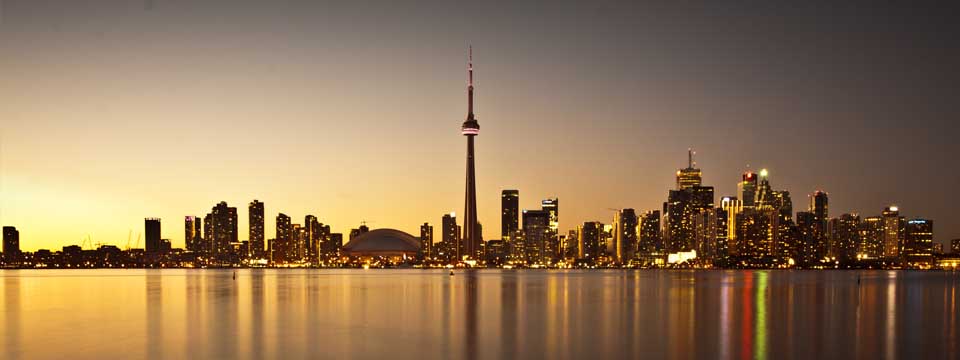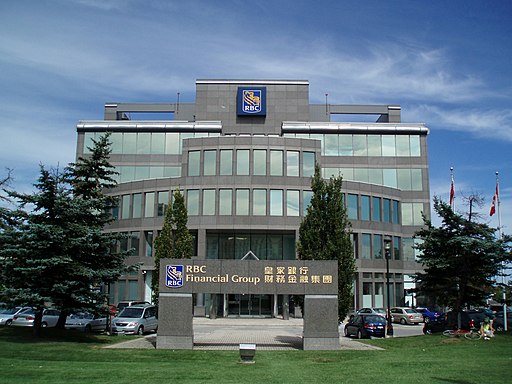Richmond Hill Real Estate & Homes for Sale
Richmond Hill, Ontario
From Wikipedia, the free encyclopedia
Richmond Hill (2011 population 185,541) is a town located in Southern Ontario, Canada in the central portion of York Region, Ontario. It is part of the Greater Toronto Area, being located about halfway between Toronto and Lake Simcoe. It is bounded by Bloomington Rd. (Aurora town limit) to the north, York Regional road 7 (Vaughan city limit west of Yonge St., Markham town limit east of Yonge St.) to the south, Bathurst St. (Vaughan city limit) to the west, and Ontario Highway 404 (Markham town limit) to the east. It's southern limit is about 4 kilometres (3 miles) north of the Toronto city limit, Steeles Avenue and approximately 20 kilometres (12 miles) north of the downtown core of Toronto. The town extends 14 kilometres north-south and 7 kilometres east-west. It is the third most populous municipality in York Region and the 28th most populous municipality in Canada.
Once considered the "Rose Capital of the World", Richmond Hill has in recent years seen a huge population upsurge, being Canada's fastest-growing community in the 1990s. The town is home to the world-renowned David Dunlap Observatory telescope, at one time the second largest telescope in the world, and still the largest in Canada.. It is twinned with Lakeland, Florida.
Demographics
Richmond Hill is one of the fastest growing communities in Canada, with a large multicultural population. The 2011 Census recorded a population of 185,541, an increase of 14% from 2006 and more than double the national and provincial averages of 5.9% and 5.7% respectively. The town's population is projected to exceed 200,000 by the year 2015.
According to 2011 Census data, English is the mother tongue of (a comparatively low) 40.7% of the residents of Richmond Hill. Native speakers of Cantonese make up 8.6% of the population, closely trailed by those of Persian (Farsi), constituting 8.5% of the town's population. Not otherwise specified Chinese languages serve as mother tongue for 6.5% of Richmond Hill residents. Following are Russian (5.3%), Mandarin (3.9%), Italian (3.9%), and Korean (2.3%), thus formulating a very diverse linguistic milieu.
Economy
According to the town's website as of 2011, Richmond Hill is an affluent community with more than 52% of families reporting incomes of greater than $70,000 and over 31% of households reporting incomes greater than $100,000. The average household income in Richmond Hill is $100,900 which is 34% higher than the Canadian average and 26% higher than the provincial average. Based on the 2006 Census, 42.62% of families in the Town of Richmond Hill earned over $100,000 and over. The employment rate of the town is 66.36% with the most prevalent occupations being in the business, finance and administration and management sectors. The 2006 Census showed that the unemployment rate is very low at 3.77%, compared with the 7.4% unemployment rate across Canada during the time of the Census.
The 1990s and 2000s are a period of strong economic growth for Richmond Hill; In 1999 industrial, commercial and institutional growth was valued at $88.9 million, up from $67.9 million in 1998. The economic growth of 1999 won the town's economic development department three provincial awards from the Economic Developers Council of Ontario. The border between Richmond Hill and Markham is a rapidly growing area for information technology and high-tech industry with over 1,000 such businesses located along their border in 2000.
Most business in Richmond Hill are small businesses, with more than half of all employers in the town having four workers or less. The town is home to thecorporate headquarters of Acklands Grainger Inc., Compugen Inc., Compuware, DMC Mining Services, Lexmark, Rogers Communications, Science & Medicine Canada, and Staples.
Transportation
The town of Richmond Hill is well serviced in terms of transportation facilities for a community of its size. The eastern border of the town is Highway 404, a major highway which leads directly into the downtown core of the City of Toronto via the Don Valley Parkway (DVP). Highway 404 also intersects with Highway 401 in North York, which is one of the most traversed highways on the planet and is the principal east/west route in the Greater Toronto Area (GTA). The town's southern border is defined by the former Highway 7 and a parallel expressway, Highway 407. The latter is a toll route (the only currently existing in the province) and was designed as a bypass for the 401. The combined effect of these highways ensures that Richmond Hill is well integrated into Ontario’s road network and has easy access for all road vehicles. The ease of accessing the town is threatened by increasing traffic due to growth in the region, as the resulting commutes (sometimes several hours in the winter) diminish the usefulness of the road network.
Public transit within the town of Richmond Hill is on buses co-ordinated by York Region Transit (YRT). In September 2005, YRT unveiled a new rapid transit initiative entitled VIVAwhich provides enhanced bus service on major routes using vehicles capable of speeding up traffic lights to lessen the time they idle. YRT also operates several feeder routes on secondary streets in the town. While reaction to the VIVA program has been positive and the funding provided considerable, there hasn’t been as large an increase in commuter use as was hoped.
Commuter train service is provided to the town by GO Transit on the Richmond Hill line with two stations in the town, Richmond Hill Station and Langstaff Station. Langstaff Station is near the new Richmond Hill Centre Terminal of York Region Transit at Highway 7 and Yonge Street, and is connected to it by a pedestrian bridge opened in March 2008. The Richmond Hill Centre Terminal is complete with enclosed heating areas, payphones, and credit card/debit card ticket purchasing machines.
Owing to its proximity to Toronto, there are plans to extend the TTC subway system to the intersection of Yonge and Highway 7. A timeline has not been established.
Landmarks
The Emerald Isle motel on Yonge Street is known to display conservative rhymes and provocative quotes on their sign. These quotes usually relate to current events. The film, Man of the Year, starring Robin Williams was filmed at Emerald Isle Motel in late 2005. This motel also was featured in the film The Wrong Guy.
The David Dunlap Observatory is home to the largest reflecting telescope in Canada. The 74-inch (1,900 mm) telescope was the second largest in the world upon its construction in 1935. The observatory was a research facility of theUniversity of Toronto.
The original Harvey's restaurant was opened in Richmond Hill in 1959 at the corner of Yonge Street and Observatory Lane. It was demolished in February 2012 to make place for condominiums named Xpression.
Education
The York Region District School Board operates 25 public elementary schools in Richmond Hill, with 5 additional elementary schools in the planning stage. It also operates 5 secondary schools in Richmond Hill: Alexander Mackenzie High School, Bayview Secondary School, Langstaff Secondary School, Richmond Green Secondary School and Richmond Hill High School. Students in schools in the York Region District School Board have scored above the provincial average on the Assessment of Reading, Writing and Mathematics, Primary Division (Grades 1–3) and Junior Division (Grades 4–6) since their introduction in 2002. The board's students in academic math streams have performed above the provincial average on the Grade 9 Assessment of Mathematics every year since its inception in 2002, while those in applied math streams were below the provincial average in 2002-2005, and above the provincial average from 2005-2007.
The York Catholic District School Board operates 13 Catholic elementary schools in Richmond Hill. It also operates two Catholic secondary schools, St. Theresa of Lisieux Catholic High School and Jean Vanier Catholic High School.
There are also four private primary schools located in Richmond Hill and four private secondary schools, including Holy Trinity School. and Global Science Academy of Toronto.
Post-secondary education services are provided to the residents of Richmond Hill by several post-secondary educational institutions in Toronto, some of which have satellite campuses in nearby communities.
Former Governor General Michaëlle Jean was a guest at the opening ceremony of a school named after her, in 2008, the Michaëlle Jean Public School.
Geography
The predominant feature of the town's geography, as its name suggests, is its elevation above surrounding regions. Thousands of years ago during the last ice-age, glaciers moving in a southerly direction amassed a considerable amount of earth in front of them which they carried forward as they grew. Gradually, as the temperature increased the growth of the glaciers lessened and eventually they began to recede to what is now the polar ice cap. The earth that had been collected by the glacier's movement however was left in place and the elevated region that remained comprises modern day Richmond Hill.
The town itself is at a much greater elevation than other communities within the Greater Toronto Area (GTA) and with exclusion of areas closely alongside its borders, the constituent of York region with the greatest height above sea level. The uneven melting of the glacier that formed the town has led to an extremely varied geography within the town's own borders, leading to such features as kettle lakes, minor tributaries and most notably the Oak Ridges Moraine.
Kettle lakes are the result of glacier water getting caught in water-tight depressions in the land and are sustained by only rainfall in the immediate area. The Town of Richmond Hill has many of these water bodies and its three largest in order of decreasing size are Lake Wilcox, Bond Lake and Philips Lake. The kettle lakes are predominantly confined to the northern fringes of the town.
Being elevated above the surrounding region, precipitation in the town tends to flow outwards via the multitude of streams and rivers that flow through the town. Principally water flow is in one of two directions, south to Lake Ontario or north to Lake Simcoe where they join up with larger tributaries that feed into the water bodies. Of note, are the Rouge and Don rivers which receive some of their flow from sources in the town.
Perhaps the most important geographical feature of the Town of Richmond Hill is the Oak Ridges Moraine. The moraine is a further elevated region of loose soil which comprises a significant portion (roughly the northern third) of the land area of the town. Its porous nature allows the collection and natural filtering of waters that flow through it which are then fed into multiple underground aquifers. While the town receives its water from the City of Toronto, these aquifers are an important source for those with their own wells in addition to surrounding communities. The ability of the soil to hold so much water means that despite Richmond Hill's comparatively high elevation, it has a very high water table which poses some problems to construction. The moraine is also host to a staggering amount of biodiversity and in recent years there has been a considerable amount of pressure applied to government to shield the area from development. Consequently, a considerable portion of Richmond Hill is subject to the Ontario Government's Greenbelt legislation.
Real Estate Aurora - Real Estate Buttonville - Real Estate Maple - Real Estate Markham - Real Estate Newmarket - Real Estate Richmond Hill - Real Estate Thornhill - Real Estate Toronto - Real Estate Unionville - Real Estate Vaughan - Real Estate Whitchurch-Stouffville - Real Estate Woodbridge











